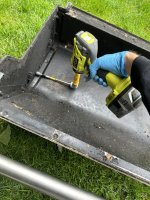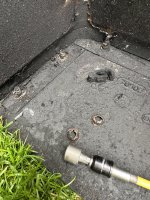John-NY
TVWBB Pro
I’ve always been too intimidated to try to remove end caps but always see others post pictures of theirs ready for painting and I think to myself how did they get the bolts off?
There’s hardly any space to fit something in there to remove them.
I just concocted my own solution and it seems to work great.
Impact driver
Right Angle Attachment
Extension
7/16 Socket
Low speed and it pulls the little twist nuts right off
Hopefully this can help someone else.


There’s hardly any space to fit something in there to remove them.
I just concocted my own solution and it seems to work great.
Impact driver
Right Angle Attachment
Extension
7/16 Socket
Low speed and it pulls the little twist nuts right off
Hopefully this can help someone else.


